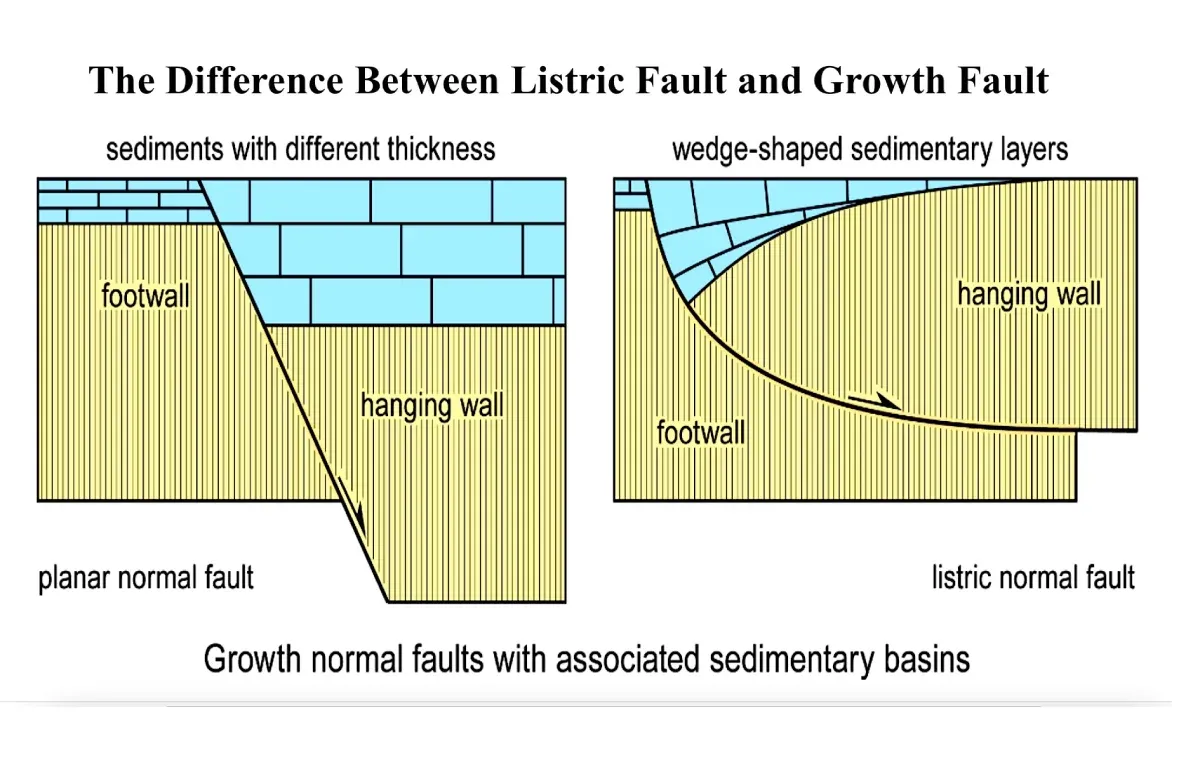Listric Fault and Growth Fault: The Difference
The main difference between a listric fault and a growth fault is that a listric fault is a type of normal fault that has a concave-upward shape, while a growth fault is a normal fault that continues to move during sedimentation.
Listric faults are common in areas where the crust is being stretched, such as continental rifts and passive margins. They are formed when the rock on one side of the fault is weaker than the rock on the other side, and the weaker rock is able to slide down the steeper side of the fault.
Growth faults are common in areas where there is a lot of sediment deposition, such as deltas and continental shelves. They are formed when the weight of the sediment causes the crust to subside, and the fault plane is reactivated as the sediment continues to pile up.
Details about Listric Fault and Growth Fault
 |
| Photo: Jean-Pierre Burg. |
Listric faults
Listric faults are typically found in areas where the crust is being stretched, such as continental rifts and passive margins.
Listric faults are formed when the rock on one side of the fault is weaker than the rock on the other side.
The weaker rock is able to slide down the steeper side of the fault, forming a concave-upward shape.
Listric faults can be very large, and can extend for hundreds of kilometers.
Listric faults are important features in many geological settings, and can have a significant impact on the landscape.
Growth faults
Growth faults are typically found in areas where there is a lot of sediment deposition, such as deltas and continental shelves.
Growth faults are formed when the weight of the sediment causes the crust to subside.
As the sediment continues to pile up, the fault plane is reactivated, and the fault continues to move.
Growth faults can be very large, and can extend for hundreds of kilometers.
Growth faults are important features in many geological settings, and can have a significant impact on the landscape.

%20(1).webp)






